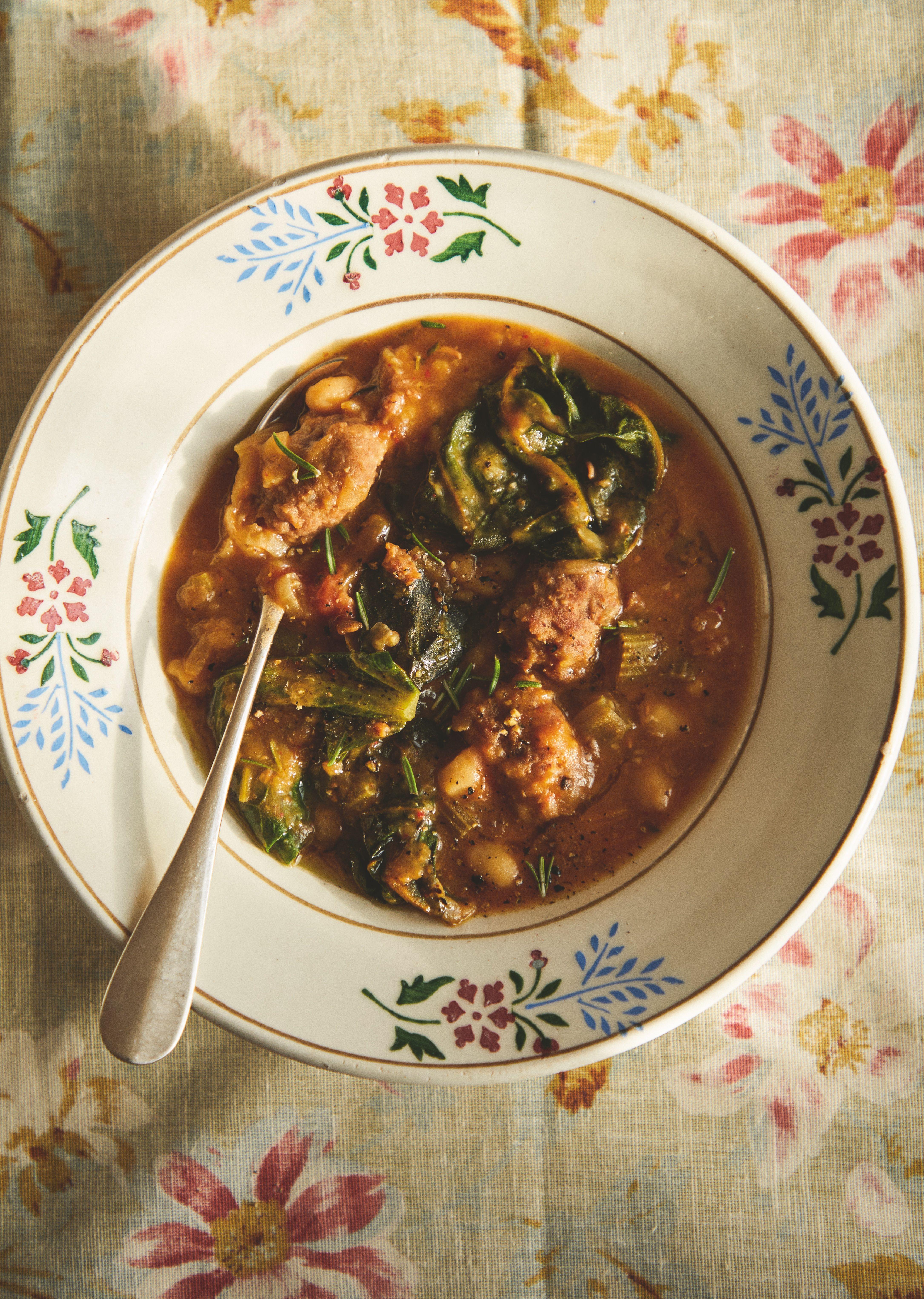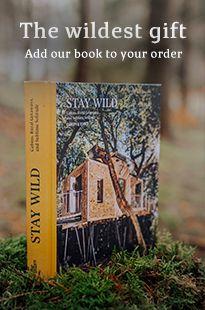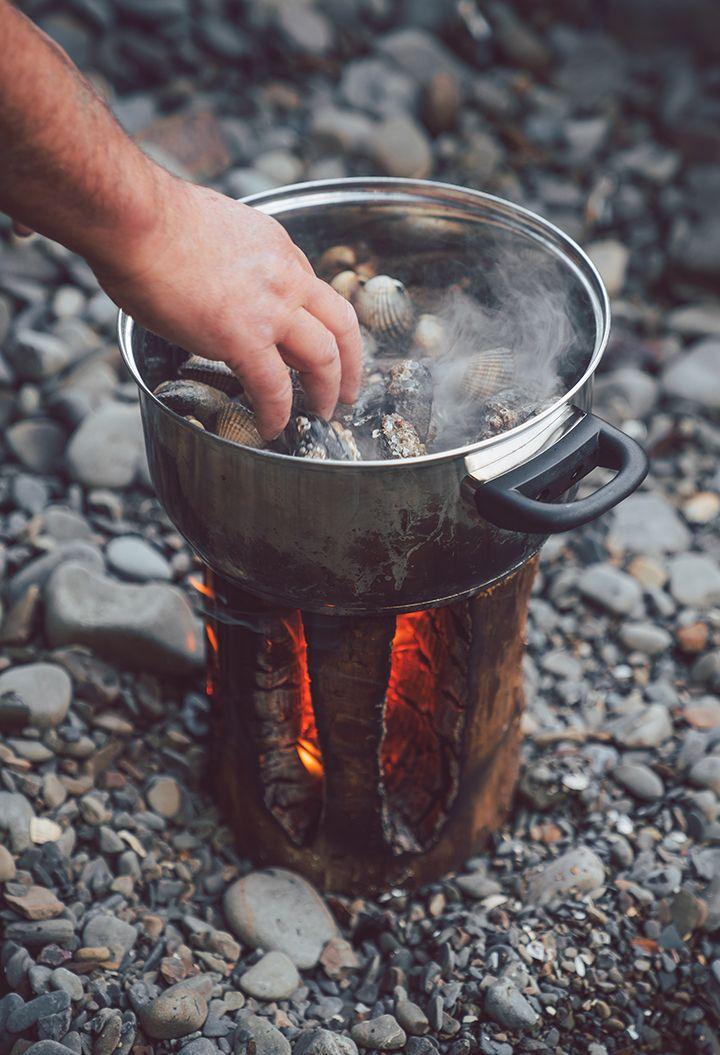
Eating seasonally with Julius Roberts: A hearty winter sausage stew
A first-generation farmer and restaurant-trained chef, Julius Roberts swapped his 6am starts at renowned restaurant, Noble Rot in London, for 6am goat feeds out in the Dorset countryside. Tired of the 17-hour days and the inevitable hedonistic lifestyle of hospitality, Roberts sought a slower, healthier pace - in check with nature. Letting himself cycle back into normal sleeping patterns, he found the peace in natural rhythms, letting what could have been a simple routine become a founding value in the way he lives his life... and picks his food. Going with the seasons is the theme of the book, The Farm Table, teaching people to connect with nature through the natural world, and their connection to it through their food. Over the next few months we'll be bringing you seasonal recipes, perfect for making on your next Canopy & Stars adventure. Over to Julius...
But why eat seasonally?
Seasonality is the principle of being guided by the seasons in the way you shop and eat. It makes veg exciting. I look forward to my first pumpkin of the year, snapping my first sweetcorn off the stalk and picking wild cherries with juice bleeding down my arm. Cooking seasonally ensures you are eating produce in its prime, when it will be at its most nutritious and most flavourful, and as a cook that makes a huge difference! In the kitchen all you can do is enhance flavour; you cannot create flavour that wasn't there in the first place. If you start with produce at its peak, half the work is already done for you and all you need to do is keep it simple to create exceptionally delicious food.
This is a dish I often find myself yearning for on a long, dark evening. It sits somewhere between a soup and a stew. As the beans cook, they relax into the unctuous broth, studded with rosemary, chilli and cinnamon for a soothing warmth. If you can find Italian sausages, they have a coarser texture and pleasing richness, but a quality British banger will do the trick too. We eat this on our knees by the fire with rain lashing against the windows. All it needs is a hunk of bread with butter thick enough to leave teeth marks.
Recipe
Ingredients:
(Serves 4-5)
- 500g Italian sausages
- 3 cloves of garlic
- 2 celery sticks
- 2 brown onions
- 3 tbsp olive oil
- A generous pinch of chilli flakes, for warmth, not prickly heat
- A few sprigs of rosemary (sage or thyme also work)
- 2 bay leaves
- 1 stick of cinnamon
- A small glass of Madeira, sweetish sherry, beer or white wine
- 2 plum tomatoes from a tin
- 1 x 700g jar of white beans (or 2 x 400g tins – I like to use 1 cannellini and 1 butter bean)
- 750ml chicken stock
- 250g Swiss chard or cavolo nero

Method:
Start by slicing the skin of the sausages so you can remove the meat. Then roughly break into small meatball-size pieces.
Finely slice the garlic, celery and onions. Get a large heavy-based pan hot, drizzle in the olive oil and, once warm, add the sausage. Fry for a few minutes to release the fat and get some colour on the meat. Then turn the heat right down and add the garlic, chilli flakes, rosemary, bay leaves and cinnamon. Don’t let the garlic take on any colour – this stage is about slowly infusing flavour into the oil, so you want a low heat and a gentle sizzle.
When ready, pour in the Madeira to deglaze the pan – you can do this early, to cool down the pan if your garlic is beginning to colour. With a wooden spoon, scrape up all the goodness from the bottom of the pan, then add the onions and celery, and crush in the tomatoes. Season generously, mix well and cook on a gentle heat for 10–12 minutes, until the onions are sweet and wonderfully softened.
Add the beans and pour in the stock. Bring to a gentle simmer, then cook for about 20–30 minutes, until the broth thickens and the flavours come together. Strip the stalks from the Swiss chard and chop into 2cm pieces. Add them to the broth and simmer for a few minutes, then add the leaves and stir through. Put the lid on, turn off the heat and leave for 5 minutes.
When ready, remove the lid and have a taste. You might want to add a touch more chilli flakes if the warmth isn’t quite there, and more salt if the broth isn’t rich enough. Pour generously into bowls and serve with thick slices of lavishly buttered bread for dunking.
This is just one of many incredible recipes in Julius's new book, The Farm Table, and it's a hearty, wholesome joyride through the best of every season -- and how to cook using what's local, what's fresh, and what's in season. Try your hands at this phenomenal dish -- and if you need us, we'll be at a cabin in the woods somewhere -- trying all the others too.







